common dandelion
(Taraxacum officinale ssp. officinale)
Conservation • Weed • Wetland • Description • Habitat • Ecology • Use • Distribution • Taxonomy
Description |
Common dandelion is an exotic, very common, widely recognized, low growing, herbaceous plant. It is native to Europe, Asia, northern Africa, and the Indian subcontinent. It was introduced and is now naturalized throughout North America. It occurs in every state in the United States, every province in Canada except Nunavut, and every county in Minnesota. Common dandelion is a hardy and resilient plant, allowing it to thrive in a wide variety of habitats and environmental conditions. It has little ability to spread into high quality native habitats, but it readily invades disturbed areas that have been degraded by human activities. It is found in open areas, including fields, pastures, forest openings, stream banks, roadsides, railroads, lawns, and other disturbed sites. It grows under full or partial sun, in moderately moist soil that contains mostly loam or clay and loam. Common dandelion is an erect, perennial forb. It can be ¾″ to 23½″ (2 to 60 cm) tall, but it is usually no more than 15¾″ (40 cm) in height. It rises on up to 20 or more basal leaves and 1 to 15 or more flowering stems (scapes) from a deep, somewhat fleshy, seldom branched taproot. When broken, the scapes and leaves exude a milky latex. When pulled or dug up, the plant can regenerate from a small piece of the taproot that remains in the soil. It often forms large colonies. The leaves are all basal. They are erect to horizontal, ¾″ to 17¾″ (2 to 45 cm) long, and ⅜″ to 4″ (1 to 10 cm) wide. Each leaf is inversely lance shaped, oblong, or inversely egg shaped, and is gradually tapered to a narrow leaf stalk (petiole). The petiole is more or less narrowly winged. The leaf blade is usually shallowly or deeply lobed (pinnatifid), sometimes cut nearly to the midrib, but smaller leaves are sometimes merely toothed. The lobes are broadly to narrowly triangular or nearly lance shaped, and the lobe ends are pointed downwards. The terminal lobe is usually about as large as the adjacent lateral lobes, sometimes larger or smaller. The upper surface is usually hairless. The lower surface may be hairless or it may be sparsely covered along the veins with curled, white, cobwebby hairs. Each scape is erect or ascending, hollow, round, unbranched, and leafless. It may be hairless or have patches of fine, white, cobwebby hairs. The inflorescence is a solitary flower head at the end of each scape. Beneath each flower head there is a group of 12 to 18 bracts (calyculi) in 2 series (collectively the calyx). The calyculi are lance-shaped, bent backwards (reflexed), ¼″ to ½″ (6 to 12 mm) long, and 1⁄16″ to ⅛″ (2.8 to 3.5 mm) wide. They are green to dark green or brownish green, often dark gray or purplish at the tip, and sometimes covered with a whitish waxy film (glaucous). Surrounding the base of the flower head is a bell-shaped whorl of 13 to 18 bracts (phyllaries) in 2 series (collectively the involucre). The phyllaries are lance shaped, 1⁄16″ to ⅛″ (2.8 to 3.5 mm) wide, and about twice as long as the calyculi. The involucre does not have small, horn-like protuberances. Each flower head is 1″ to 2″ (25 to 50 mm) wide. It is composed of 40 to 100 or more strap-shaped, bright yellow, ray florets and no disk florets. The fruiting head is a whitish, spherical mass with a feathery appearance. The fruit is an olive colored or olive-brown seed capsule (cypsela) with a tuft of 50 to 105 or more white hairs (pappus) attached at the tip. The cypselae are dispersed by wind. |
Height |
¾″ to 23½″ (2 to 60 cm) |
Flower Color |
Bright yellow |
Similar Species |
Red-seeded dandelion (Taraxacum erythrospermum) leaves are very deeply cut. The terminal lobe is smaller or at least no wider than the 2 adjacent lateral lobes. The flower heads are no more than 1″ across. The achene is reddish-brown. |
Habitat |
Fields, pastures, forest openings, stream banks, roadsides, railroads, lawns, and other disturbed sites |
Ecology |
Flowering |
April to November |
Pests and Diseases |
|
Use |
|
Distribution |
||
|
Sources |
|
| 11/5/2024 | ||
Nativity |
||
Native to Europe, Asia, northern Africa, and the Indian subcontinent. Introduced and naturalized in North America. |
||
Occurrence |
||
Widespread, common, and locally abundant. |
||
Taxonomy |
|
Kingdom |
Plantae (green algae and land plants) |
Subkingdom |
Viridiplantae (green plants) |
Infrakingdom |
Streptophyta (land plants and green algae) |
Superdivision |
|
Division |
Tracheophyta (vascular plants) |
Subdivision |
Spermatophytina (seed plants) |
Class |
|
Superorder |
Asteranae |
Order |
Asterales (sunflowers, bellflowers, fanflowers, and allies) |
Family |
Asteraceae (sunflowers, daisies, asters, and allies) |
Subfamily |
Cichorioideae (chicories, dandelions, and allies) |
Tribe |
Cichorieae (lettuce, chicory, dandelion, and salsify) |
Subtribe |
Crepidinae (dandelions, hawksbeards, and rattlesnake roots) |
Genus |
Taraxacum (dandelions) |
Section |
Taraxacum (common dandelions) |
Species |
Taraxacum officinale (common dandelion) |
Subordinate Taxa |
|
Many subspecies and microspecies of Taraxacum officinale have been described. One subspecies is native to North America, but its range is restricted to Alaska. Two subspecies have been introduced and naturalized in North America. Only one subspecies, Taraxacum officinale ssp. officinale, occurs in Minnesota. |
|
Synonyms |
|
Leontodon taraxacoides Leontodon taraxacoides ssp. longirostris Leontodon taraxacum Taraxacum dahlstedtii Taraxacum dens-leonis Taraxacum devians Taraxacum officinale var. palustre Taraxacum retroflexum Taraxacum rhodolepis Taraxacum sylvanicum Taraxacum undulatum Taraxacum vagans Taraxacum xanthostigma |
|
Common Names |
|
common dandelion lesser hawkbit wandering dandelion |
|
Glossary
Bract
Modified leaf at the base of a flower stalk, flower cluster, or inflorescence.
Calyx
The group of outer floral leaves (sepals) below the petals, occasionally forming a tube. Plural: calyces.
Compound leaf
A leaf that is divided into leaflets, each leaflet having the general appearance of a leaf, with all leaflets attached to a single leaf stem.
Cypsela
A dry, one-chambered, single-seeded seed capsule, formed from a single carpel, with the seed attached to the membranous outer layer (wall) only by the seed stalk; the wall, formed from the wall of the inferior ovary and also from other tissues derived from the receptacle or hypanthium, does not split open at maturity, but relies on decay or predation to release the contents.
Glaucous
Pale green or bluish gray due to a whitish, powdery or waxy film, as on a plum or a grape.
Involucre
A whorl of bracts beneath or surrounding a flower, flower head, or flower cluster.
Latex
A milky, clear, or sometimes colored sap that coagulates on exposure to air.
Petiole
On plants: The stalk of a leaf blade or a compound leaf that attaches it to the stem. On ants and wasps: The constricted first one or two segments of the rear part of the body.
Pinnatifid
Deeply cut, more than half way to the midrib but not to the midrib, into lobes that are spaced out along the midrib; the lobes do not form separate leaflets.
Scape
In plants: An erect, leafless stalk growing from the rootstock and supporting a flower or a flower cluster. In insects: The basal segment of the antenna.
Sepal
An outer floral leaf, usually green but sometimes colored, at the base of a flower.
Winged leaf stalk
A leaf stalk with a leaf-like or membrane-like extension along both sides.
Visitor Photos |
||
Share your photo of this plant. |
||
This button not working for you? |
||
Alfredo Colon |
||
 |
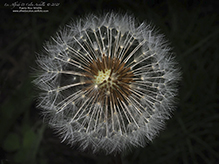 |
|
MinnesotaSeasons.com Photos |
||
 |
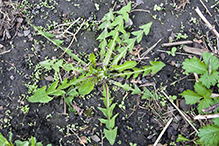 |
|
Plant |
Plant |
|
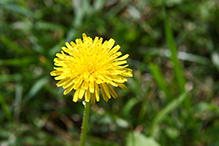 |
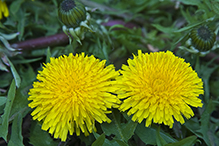 |
|
Flower |
Flower |
|
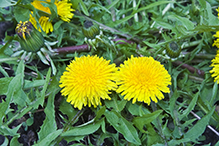 |
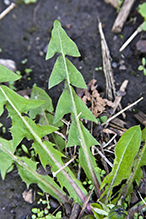 |
|
Flower |
||
|
||
|
||
|
Leaf |
|
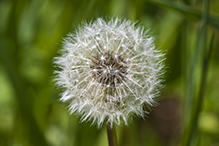 |
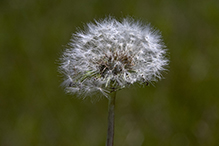 |
|
Infructescence |
||
|
||
|
||
Infructescence |
|
|
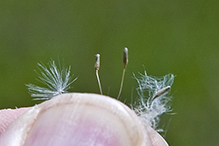 |
||
Fruit |
|

Slideshows |
Taraxacum officinale |
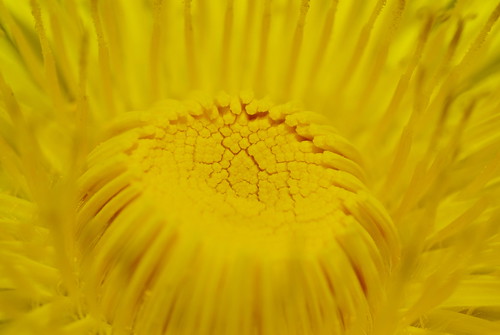
|
About
Løvetann, Dandelion |
Dandelion |
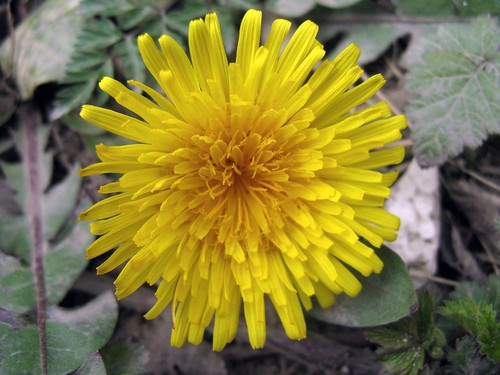
|
About
Dandelion (Taraxacum officinale). |
Dandelion |
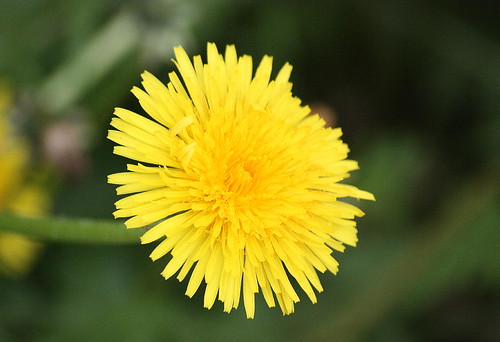
|
About
Copyright DianesDigitals |
Dandelions |
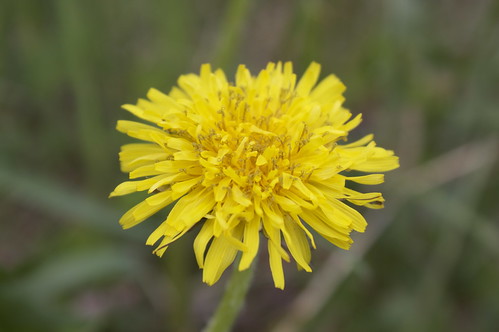
|
About
Taraxacum Officinale |
Taraxacum officinale COMMON DANDELION |
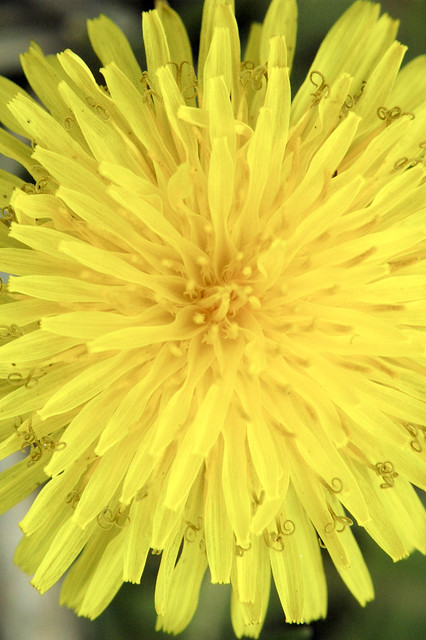
|

Visitor Videos |
||
Share your video of this plant. |
||
This button not working for you? |
||
|
Other Videos |
||
Dandelion - Taraxacum officinale (cc) |
About
Uploaded on Jun 4, 2011 Dandelion - Taraxacum officinale (cc) There are fields and fields of blooming dandelion throughout British Columbia in the spring time. Although we have been conditioned to think of them as noxious weeds best dealt with chemical poisons, there are other uses for dandelions. Small birds are very fond of the seeds of the Dandelion and pigs devour the whole plant greedily. Goats will eat it, but sheep and cattle do not care for it, though it is said to increase the milk of cows when eaten by them. Horses refuse to touch this plant, not appreciating its bitter juice. It is valuable food for rabbits and may be given them from April to September forming excellent food in spring and at breeding seasons in particular. The young leaves of the Dandelion make an agreeable and wholesome addition to spring salads and are often eaten on the Continent, especially in France. The full-grown leaves should not be taken, being too bitter, but the young leaves, especially if blanched, make an excellent salad, either alone or in combination with other plants, lettuce, shallot tops or chives. Young Dandelion leaves make delicious sandwiches, the tender leaves being laid between slices of bread and butter and sprinkled with salt. The addition of a little lemon-juice and pepper varies the flavour. The leaves should always be torn to pieces, rather than cut, in order to keep the flavour. In Berkshire and Worcestershire, the flowers are used in the preparation of a beverage known as Dandelion Wine. This is made by pouring a gallon of boiling water over a gallon of the flowers. After being well stirred, it is covered with a blanket and allowed to stand for three days, being stirred again at intervals, after which it is strained and the liquor boiled for 30 minutes, with the addition of 3 1/2 lb. of loaf sugar, a little ginger sliced, the rind of 1 orange and 1 lemon sliced. When cold, a little yeast is placed in it on a piece of toast, producing fermentation. It is then covered over and allowed to stand two days until it has ceased 'working,' when it is placed in a cask, well bunged down for two months before bottling. This wine is suggestive of sherry slightly flat, and has the deserved reputation of being an excellent tonic, extremely good for the blood. The roasted roots are largely used to form Dandelion Coffee, being first thoroughly cleaned, then dried by artificial heat, and slightly roasted till they are the tint of coffee, when they are ground ready for use. The roots are taken up in the autumn, being then most fitted for this purpose. The prepared powder is said to be almost indistinguishable from real coffee, and is claimed to be an improvement to inferior coffee, which is often an adulterated product. Of late years, Dandelion Coffee has come more into use in this country, being obtainable at most vegetarian restaurants and stores. Formerly it used occasionally to be given for medicinal purposes, generally mixed with true coffee to give it a better flavour. The ground root was sometimes mixed with chocolate for a similar purpose. Dandelion Coffee is a natural beverage without any of the injurious effects that ordinary tea and coffee have on the nerves and digestive organs. It exercises a stimulating influence over the whole system, helping the liver and kidneys to do their work and keeping the bowels in a healthy condition, so that it offers great advantages to dyspeptics and does not cause wakefulness. music by Alexander Blu 06 - Tomorrow |
Common Dandelion (Taraxacum officinale) - 2012-04-27 |
About
Published on May 1, 2012 Taraxacum officinale, the common dandelion (often simply called "dandelion"), is a herbaceous perennial plant of the family Asteraceae (Compositae). ------------------------ |

Visitor Sightings |
||
Report a sighting of this plant. |
||
This button not working for you? |
||
Alfredo Colon |
Location: Albany, NY |
 |
| Alfredo Colon 5/30 to 6/1/2021 |
Location: Woodbury, MN |
| Scott Vee 5/14/2017 |
Location: Everywhere right now. They are coming up like never seen before. 50 to 100 plants per square foot. It seams like "the year of the dandelion". I'm curious if we will see some other "bloom" in nature, like an over abundance in spiders or other insects? |
|
Crystal Boyd |
Location: Pine Bend Bluffs SNA |
|
MinnesotaSeasons.com Sightings |
||
Avon Hills Forest SNA, North Unit Bertram Chain of Lakes Regional Park Cannon River Turtle Preserve SNA Carpenter St. Croix Valley Nature Center Charles A. Lindbergh State Park Clifton E. French Regional Park Clinton Falls Dwarf Trout Lily SNA Felton Prairie SNA, Bicentennial Unit Forestville/Mystery Cave State Park Hardscrabble Woods / MG Tusler Sanctuary Itasca Wilderness Sanctuary SNA John Peter Hoffman Spring Brook Valley WMA Lake Alexander Woods SNA, South Unit Mary Schmidt Crawford Woods SNA Minnesota Valley NWR, Black Dog Unit Minnesota Valley NWR, Chaska Unit Minnesota Valley NWR, Louisville Swamp Unit Minnesota Valley NWR, Rapids Lake Unit Minnesota Valley NWR, Wilkie Unit Minnesota Valley State Recreation Area, Lawrence Unit Mound Spring Prairie SNA, North Unit Nerstrand Big Woods State Park Northern Tallgrass Prairie NWR, Rengstorf Unit P.N. and G.M. Nelson Wildlife Sanctuary Pankratz Memorial Prairie, North Unit Prairie Creek WMA, Koester Prairie Unit Richard M. & Mathilde Rice Elliott SNA Robert Ney Memorial Park Reserve Sand Prairie Wildlife Management and Environmental Education Area Spring Beauty Northern Hardwoods SNA Stanley Eddy Memorial Park Reserve |

|
Created: Last Updated: © MinnesotaSeasons.com. All rights reserved. |

